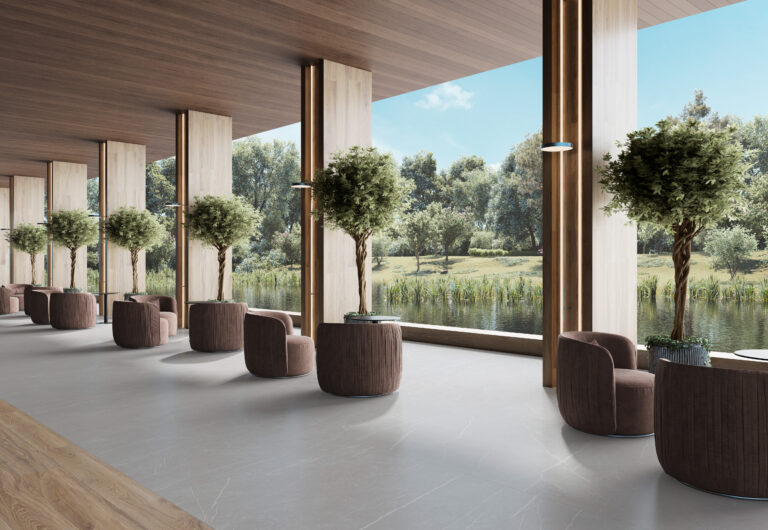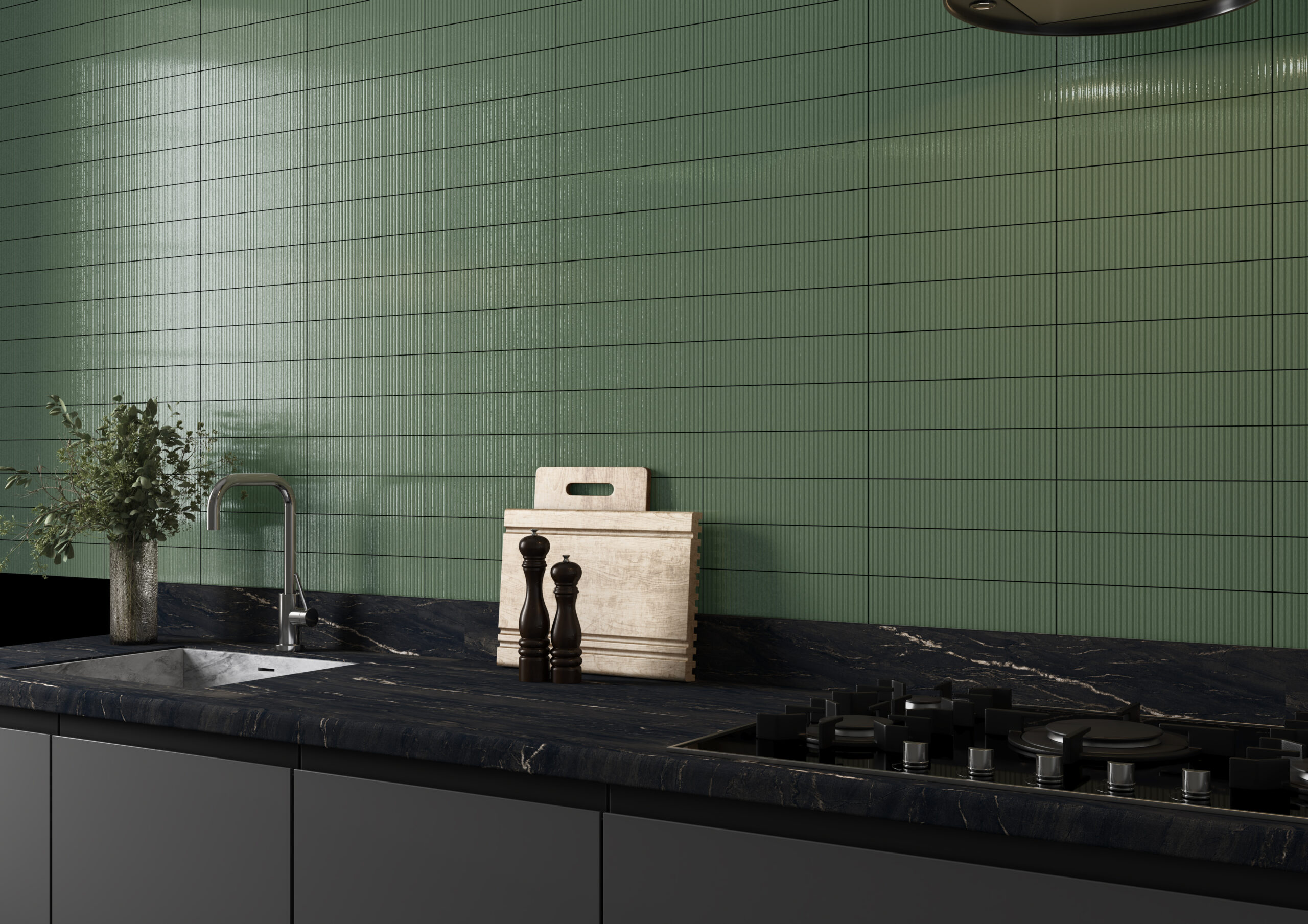
Not all ceramics are created equal. The differences between types go beyond aesthetics—they lie in the composition of the clay, the firing process, and the porosity of the material. These factors determine how each piece will perform in terms of moisture resistance, wear, temperature changes, and aging over time.
Porcelain: pure durability meets design
Porcelain is considered the technical jewel of ceramics. Made with refined clays and fired at extremely high temperatures, it achieves a high level of density and minimal water absorption (less than 0.5%). This makes it not only incredibly durable, but also extremely versatile in design—available in finishes that mimic wood, stone, marble, concrete, or even metal.
It’s the ideal choice for high-traffic areas like kitchens, living rooms, and bathrooms, and it’s especially recommended for outdoor spaces, as it’s resistant to frost, stains, and scratches. Its technical qualities also make it suitable for facades and terraces, where it withstands the elements with ease.
White body tiles: elegance and clarity for walls
White body ceramic is known for its light-colored base and fine texture. It’s typically used for wall coverings, where the demands for mechanical resistance are lower than on floors. Its biggest advantage is visual: colors and patterns appear brighter and more defined, allowing for delicate finishes that bring light and sophistication to any space.
This type of ceramic is ideal for modern bathrooms and kitchens, where style matters just as much as functionality. While it’s not as resistant as porcelain, it’s an excellent option when elegance and visual lightness are the priority.
Red body tiles: practical and budget-friendly
Red body ceramic is likely the most traditional and widely used type. Made with red clays and fired at lower temperatures, it has a more porous structure, which also makes it a more economical solution—perfect for renovations or construction projects with tighter budgets.
Though it doesn’t reach the same performance level as porcelain, red body ceramic works well for indoor floors and walls in residential spaces with moderate use. It’s also easy to cut and install, which makes it a popular choice for installers and fast-paced projects.
Rectified, non-slip, and more: variations that make a difference
Beyond the base types, there are formats and finishes that add technical and visual value. Rectified porcelain, for example, has precisely cut edges, allowing for minimal grout lines and a cleaner, more continuous look—almost like a single surface.
There are also non-slip versions, designed for outdoor areas, showers, and wet zones, meeting safety standards without compromising on style.
So… Which ceramic should you choose?
There’s no single “best” type of ceramic—each one serves a different purpose. If you’re looking for durability, versatility, and premium aesthetics, porcelain is your go-to. If you want refined wall finishes, white body tiles are ideal. And if you need functionality at a great value, red body ceramic delivers.
What really matters is understanding the intended use, environment, and technical needs of your space—and, of course, getting expert advice.
It’s not just about style—It’s about strategy
Ceramics aren’t just a design element—they’re a technical decision that affects the long-term quality and comfort of your project. Making the right choice helps you avoid future issues and create spaces that are more durable, functional, and beautiful.
At TAU, we’ve been manufacturing ceramic solutions for all types of projects for years. You can explore our full series on our website or digital catalog.
Still not sure which product fits your project? Don’t hesitate to contact us or visit one of our official distributors—we’re here to help.
To continue reading
Ceramics for Fireplaces: The Perfect Balance Between Design and Durability
Leer
Interior Design of the Future: Flexible Spaces and Smart Ceramics That Evolve With You
Leer
Discover how TAU Cerámica turns your home into a thermal comfort haven
Leer


